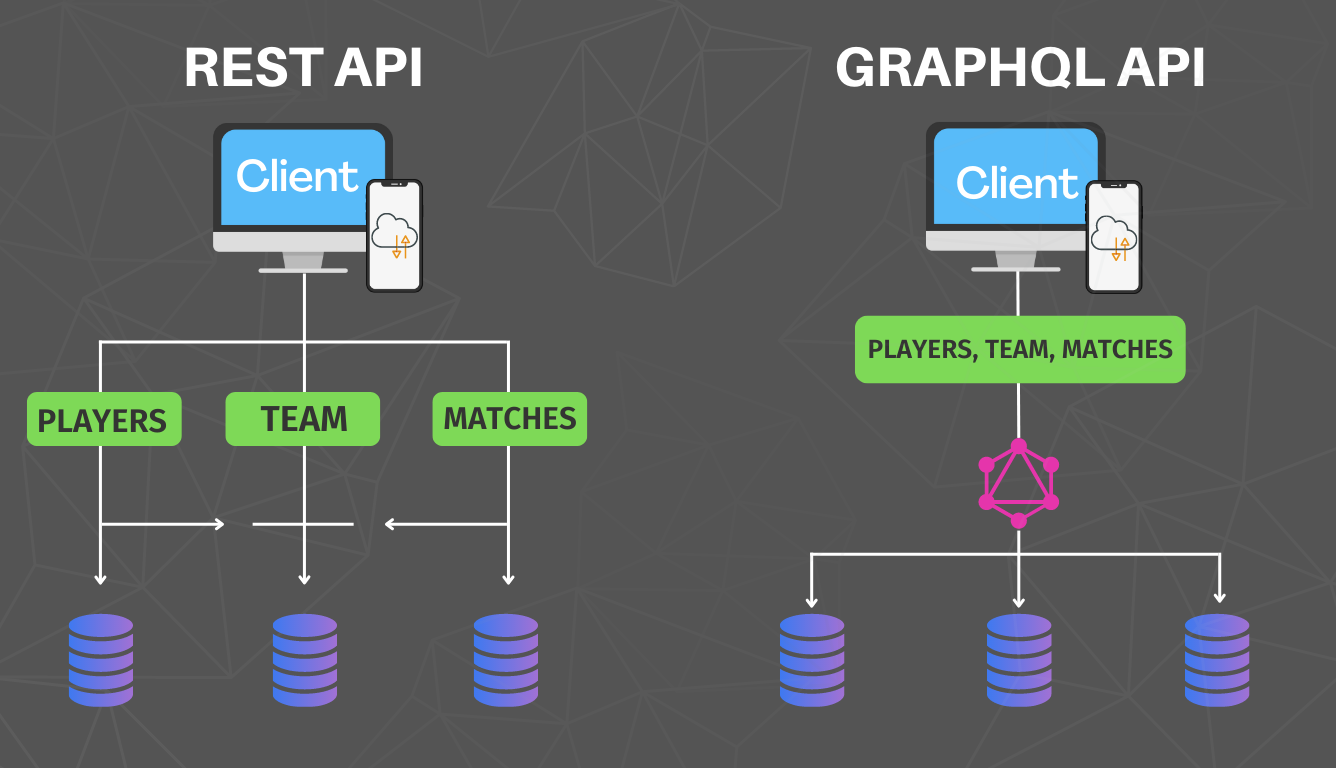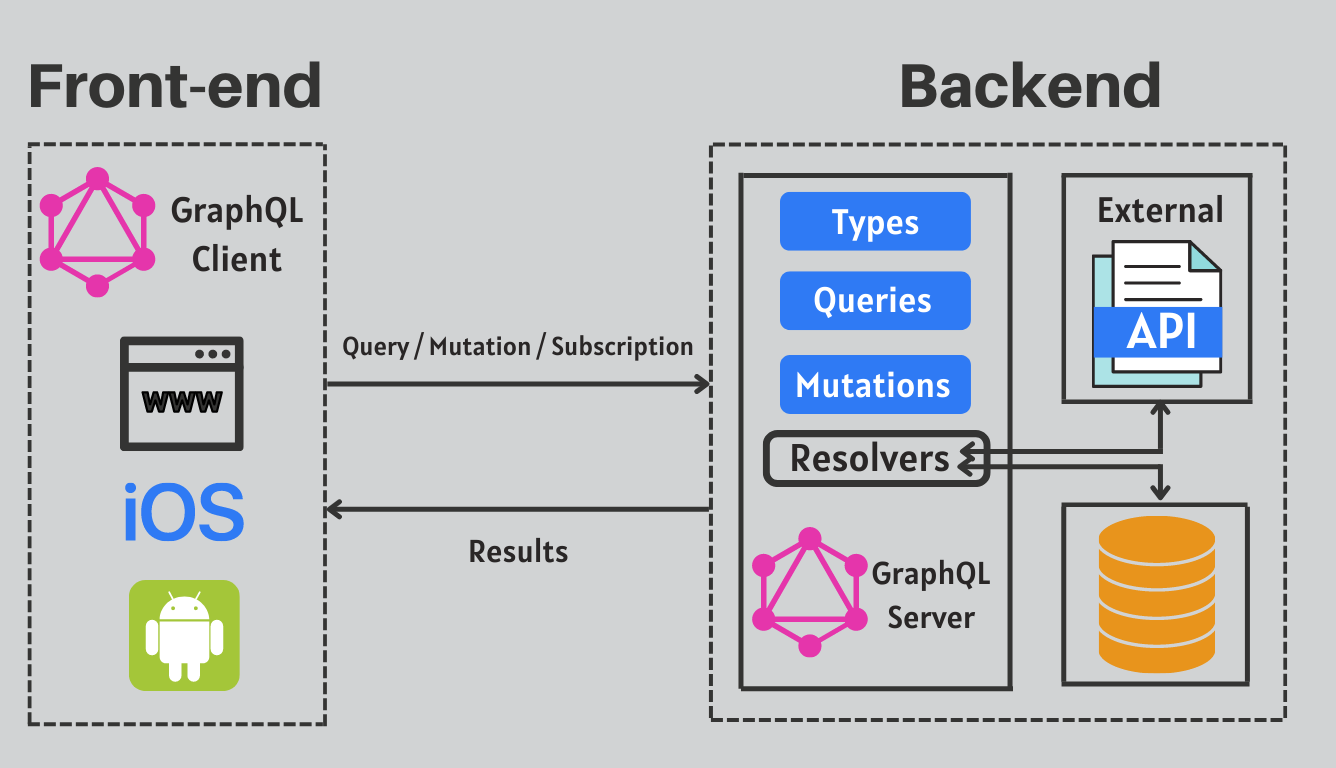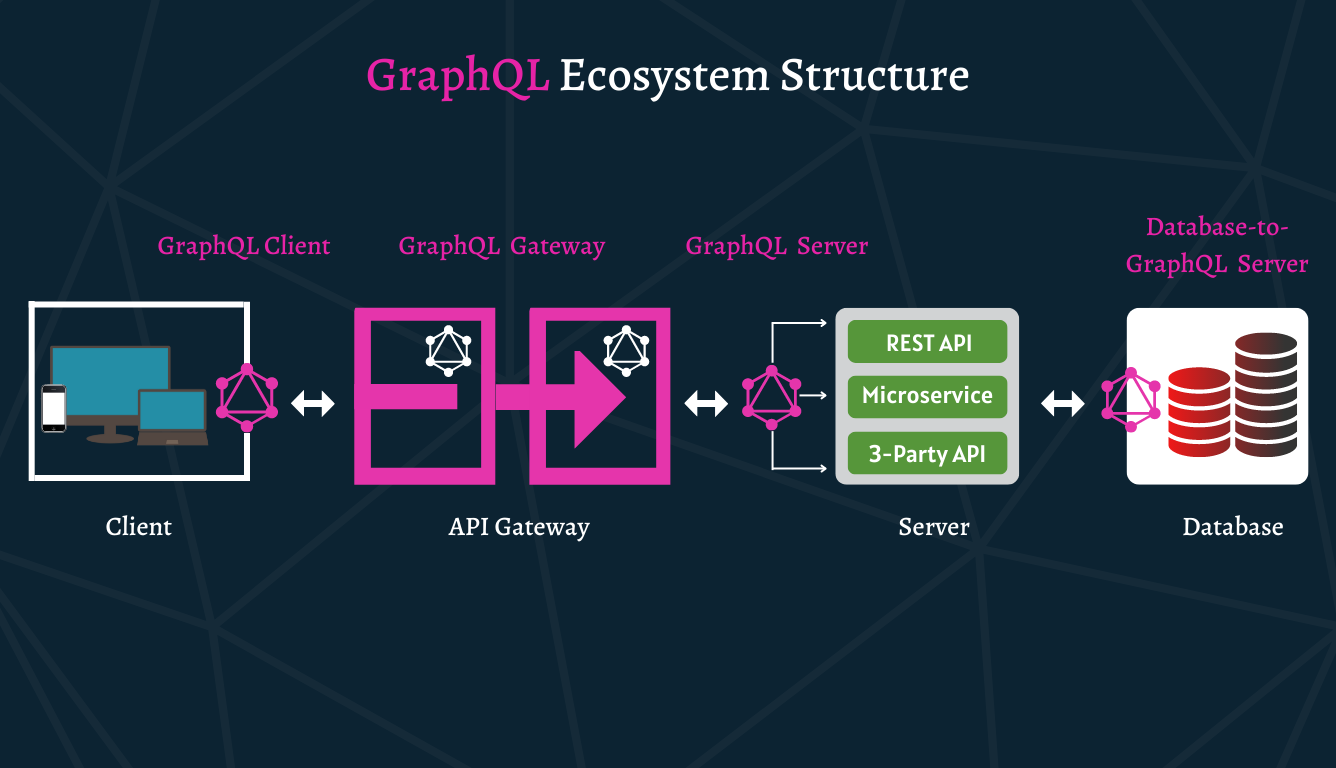8-Reasons Why & When To Use GraphQL Over REST
GraphQL is a server-side runtime and an open-source query language for developing new standards of APIs. It is a syntax for requesting data that focuses on providing clients with specific data they need. The purpose of bringing GraphQL over REST is to develop API more adaptable, developer-friendly, and fast. With GraphQL developer tools, API maintainers can add or remove fields without impacting the existing queries.

RESTful API architecture acts as a dominion for building backend web services though it comes with a few downsides. Some common ones are- over-fetching, multiple network requests for multiple resources, and waterfall network requests for dependent variables or resources. Thus, as an alternative to REST, GraphQL enables you to fetch data from numerous sources in a single API call, save bandwidth, and minimize waterfall network requests. So, here are 8-compelling reasons to use GraphQL over REST and when to use GraphQL for building APIs.
8-Significant Reasons Why Use GraphQL Over REST
#1 Strictly-typed Schema For Building Intuitive APIs
GraphQL SDL (Schema Definition Language) is strictly-typed, building a more reliable & flexible communication structure for both backend & front-end operations. The defined schema of GraphQL delivers its self-designated language between the server & client. The strictly-typed interfaces make the documentation easier and help in error detection.

Like REST, GraphQL isn’t dependent upon HTTP response codes or methods except for applying it as a channel for communication. GraphQL server has a single endpoint that works as a gateway offering extensive functionalities to clients. Wherein REST API has multiple endpoints that represent discrete resources. So, seamlessly build a uniform API over your entire application without getting restricted to a specific language or engine. This single endpoint delivers the full capabilities of the server by adding fields to the GraphQL root types- Queries, Mutation, and Subscription.
Furthermore, you need an engine to run the entire process that drives your API. A schema alone can’t add functionality to the server. It requires resolvers to fetch data for each field in the specified schema. Thus, effective schema plays an essential role in creating intuitive APIs. So, be subjective about node naming conventions and relationships in the GraphQL schema to secure a logical sense for users & domain.
#2 No More API Versioning
In RESTful architecture, APIs have multiple versions for every environment (api.domain.com/v1/, api.domain.com/v2/). That means Accept version-V1, Staging-V2, & Production-V3. Therefore, changes in requests or resources make it more challenging to manage the versions. There’s no need to maintain versions with GraphQL as it has only one graph version. The address or resource URL remains the same. You can also attach new fields or reprehend the older ones. This intuitive approach notifies the clients with a deprecation message while querying a deprecated field.
#3 Eliminates Over & Under-Fetching
Contrary to REST API architecture, GraphQL is a single endpoint that fetches the exact data at the client’s request. Over-fetching rises due to multiple requests for the same resource. For instance, a blog’s home page shows the list of all blog posts (only the Title & URLs). However, you need to fetch the entire blog post (including body data, images, etc.) through the API to represent this list. Therefore, it consumes high data and impacts your app’s performance. With GraphQL, you specify the fields (Title & URLs), and it fetches the data of those respective fields only.
On the other hand, Under-fetching happens for not getting adequate data in one API request. Thus, users may send additional requests to acquire the relevant data. For example, to know the author’s bio & name while viewing an individual blog post, you need to fetch the data of referenced author’s profile. Wherein GraphQL lets you get the entire relevant data through a single query.
#4 Less Time In API Documentation
The importance of documentation is to provide information about the use of APIs. In RESTful architecture, developers use a tool like Swagger to navigate & document sizeable APIs. In a microservice world, it becomes a bit expensive & time-consuming for API documentation. GraphQL offers a declarative data communication feature that allows developers to use the data based on their application requirements.
GraphQL has an IDE- Playground that functionalizes as a form of documentation for APIs. With this tool, you have the liberty to create interactive or static documentation. Additionally, the GraphQL Introspection query enables you to collect more details about GraphQL endpoints, schema, types, and possible operations.
Example of Introspection Query

#5 Schema Stitching & GraphQL Federation
Schema stitching is an effective solution for combining schemas in a microservice architecture. It is fruitful where each microservice controls the business data & logic against a specific domain. Furthermore, GraphQL Federation brings two or more schemas to set up a single gateway schema or unified GraphQL API. Hence, in both federation & schema stitching, requests get delegated to primary subgraphs that deliver the request for the applicable section of the graph.
#6 Error Handling
In traditional RESTful API architecture, during a request, if a part of code on a server side fails, the entire request might fail. Hence, this might lead to a complex logic or code bloat on front-end applications at times of microservice ecosystem failure. Wherein, GraphQL aims to resolve maximum data before returning.
Whenever the Apollo GraphQL server encounters an issue while processing an operation, it delivers an error array containing all the relevant information. Following that, there’s an extension for each error in the array that gives more useful information. It includes an exception. stack trace & error code. So, it recovers the data as much as possible and keeps the partial data safe for further use.
#7 Save Bandwidth & Time
You can operate multiple resource requests through a single query call. It minimizes the number of network round trips to the server, which saves bandwidth & time. It also prevents waterfall network requests for resolving the dependent resources on early requests. For instance, a blog’s home page contains multiple widgets like recent posts, most popular posts, featured ones, categories, etc. Viewing these would need a minimum of five requests with REST architecture. Wherein GraphQL requires just a single request to process the function.
#8 Open-Source Ecosystem For API Design

GraphQL has an open-source ecosystem that facilitates numerous tools, code libraries, and services. For example, Typescript & Javascript are the two commonly used languages in GraphQL architecture. The entire ecosystem runs on clients, gateways, servers, and tools. Even the popular open-source static site generator Gatsby is built on Node.js using GraphQL & React. A few examples of other tools & libraries are:
- ORM (Object Relational Mapper)- TypeORM, Mongoose, and Sequilize
- Database-to-GraphQL server- Prisma
- IDEs- GraphiQL & GraphQL Playground
Synthesizing the GraphQL ecosystem with new tools and libraries makes it easier for developers to build constructive APIs.
When To Use GraphQL? – Architectural Patterns
The next question that strikes your mind is when to use GraphQL? From the technical aspect, the use cases of standard GraphQL architectural patterns are the best way to portray its implementation.
- GraphQL Server With A Linked Database- This is the foundational use case where you get server libraries for various programming languages to build a server in line with GraphQL specifications. Here server exposes the database in a controlled manner by receiving a query and resolving it. The benefit of using this pattern is low complexities in data fetching. Low latency due to the data source being near to the application logic.

- GraphQL layer For Integration- It works as an integration hub to connect multiple backends like 3-party APIs, Microservices, and Legacy systems. Here, GraphQL unifies the existing system and resolves the queries according to the client’s requests. This pattern applies to the extensive existing services of an organization. Or else it is risky to duplicate or implement new business logic.

- Hybrid Integration- Here, the GraphQL server resolves queries by retrieving the data from its connected database & external systems. So, you get a unified API without sending multiple requests to the server to get the desired data. Let’s say you want to deprecate the services of old APIs. Firewall off the early one and allowlist your GraphQL server to add authentication & functionalities to it.

- GraphQL is beneficial for some applications where it’s obvious to fetch the nested data in a single call. For instance, in the case of blogs or social networking platforms, it’s apparent to collect the posts with the nested comments and the details of the person commenting.
- It’s a go-to choice for high-end applications such as smartwatches, mobile phones, IoT devices, and many more where bandwidth usage is a priority.
GraphQL VS REST Which Is The Best Architecture For API Design?
The most appropriate answer to this question lies within the objective of designing the API and its requirements. If you intend to build a web or mobile app that can fetch data from multiple resources in a single endpoint over low bandwidth, then GraphQL is the ideal choice. Conversely, if over or under-fetching isn’t your concern, and you need to collect entire page data, REST APIs are suitable.
Both API architectures are distinct in their features and functionalities. Here, we have covered the crucial technical factors for choosing GraphQL over REST for transforming the API design. From payload size, built-in documentation, fast performance, and error handling make it a future of APIs. To know more about API development, leave your comment below or contact us.





